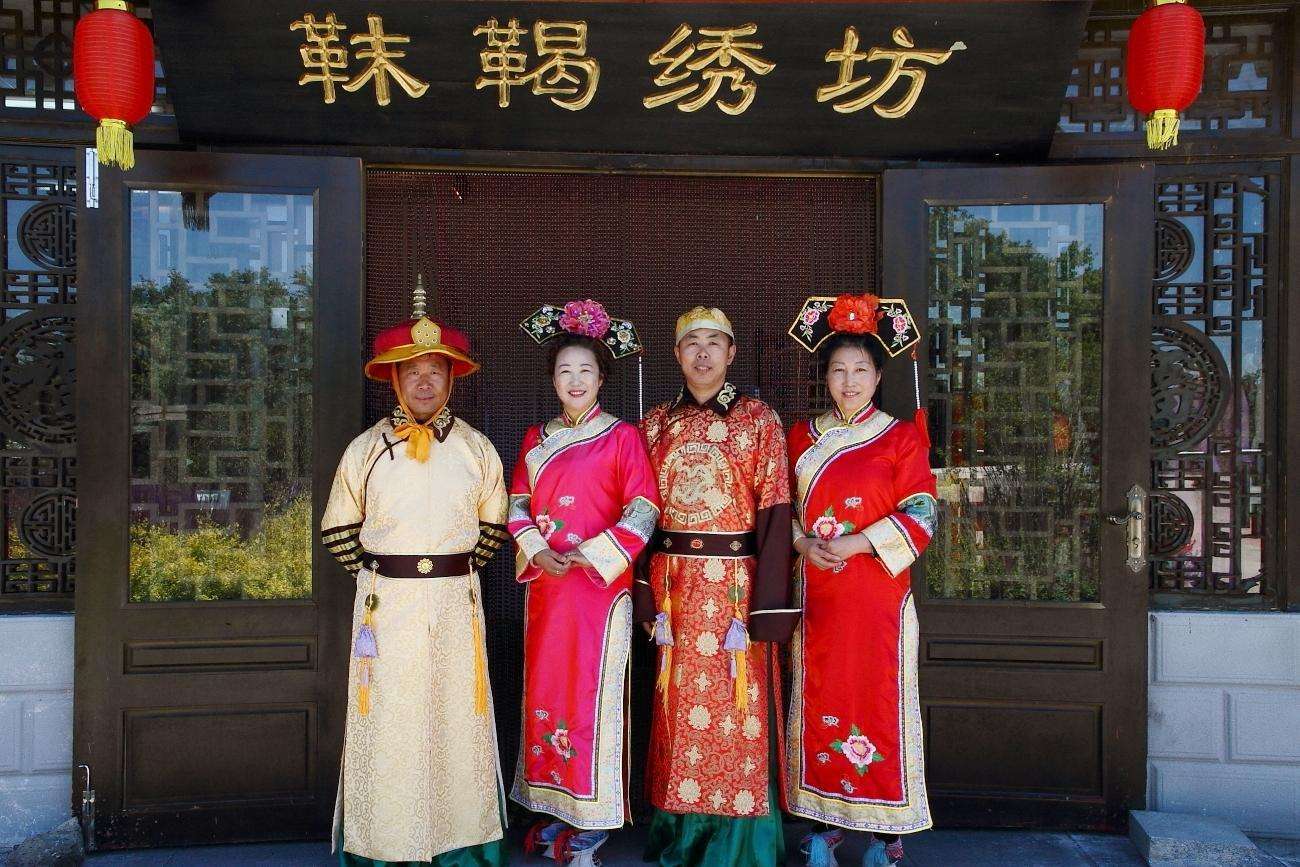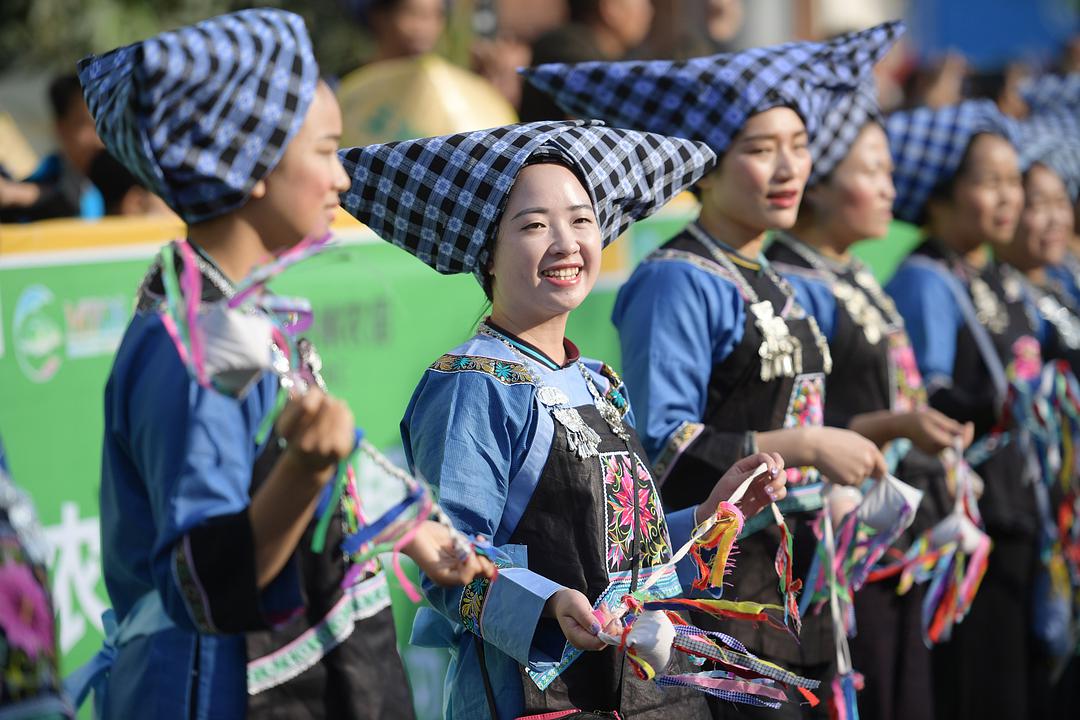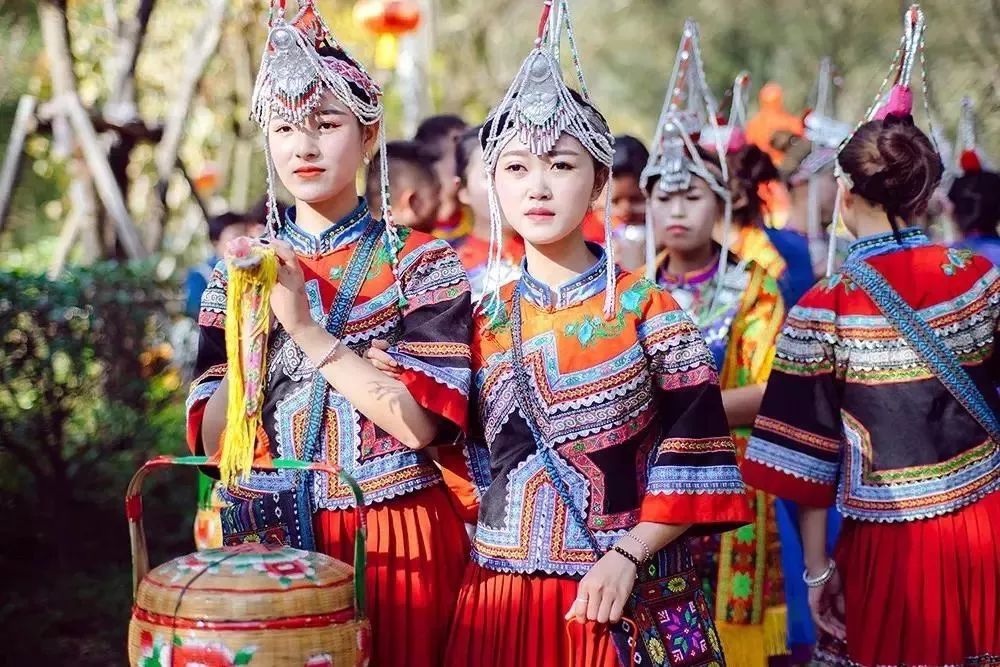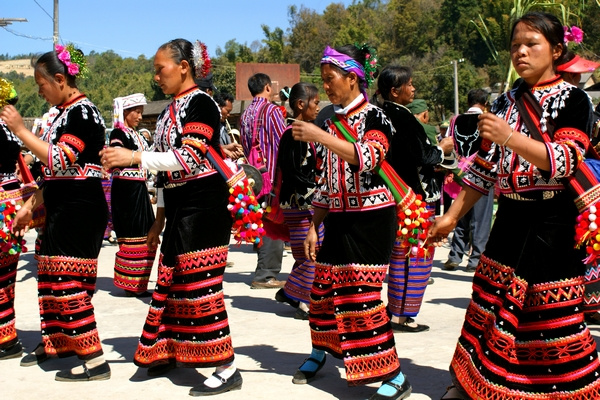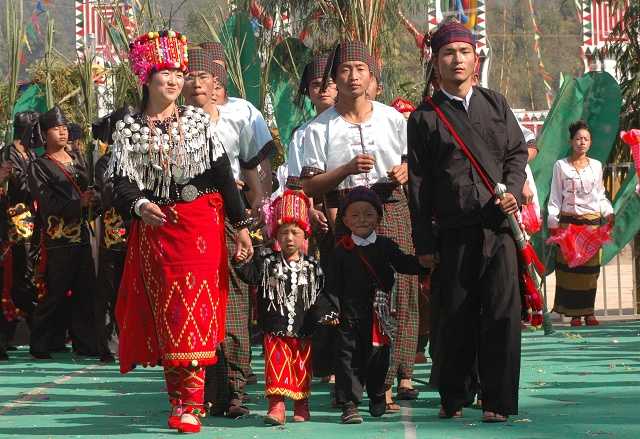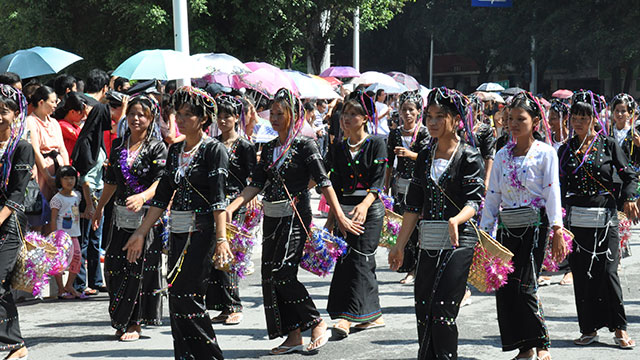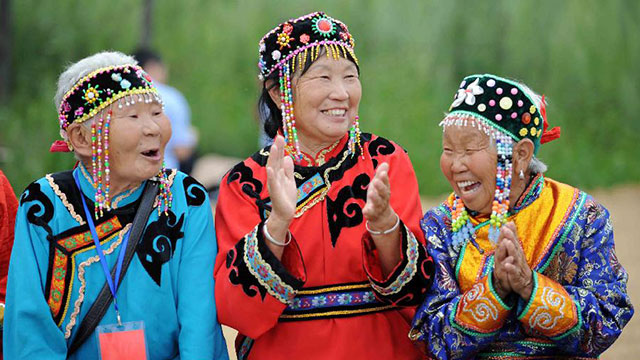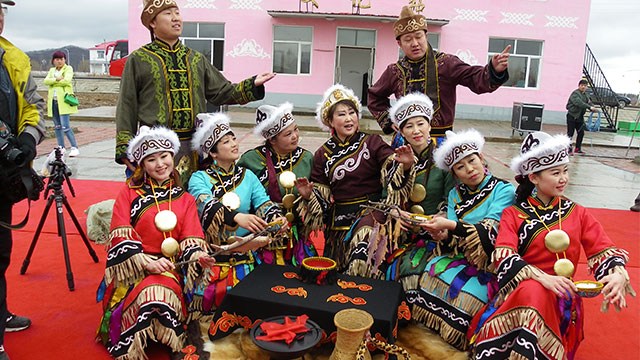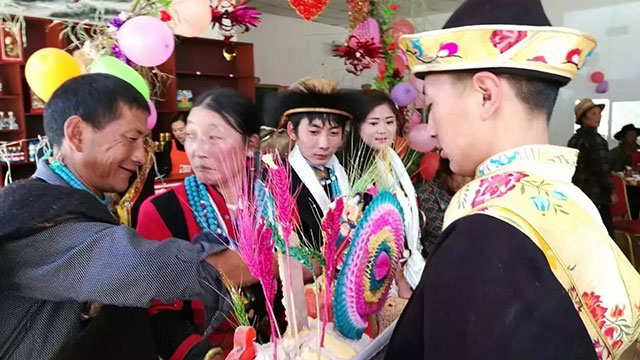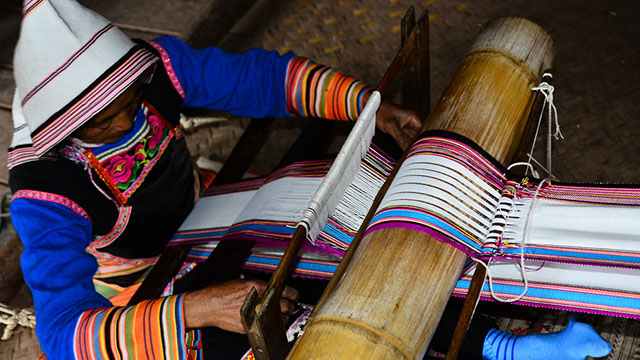Tibet Nationality
Tibetans are one of China's 56 ethnic groups and the indigenous people of the Qinghai Tibet Plateau. It is mainly distributed in Tibet Autonomous Region, Qinghai Province, Western Sichuan Province, Diqing in Yunnan, Gannan in Gansu and other regions in China. In addition, Tibetans are also distributed in India, Bhutan, the United States, Canada, Europe, Australia and other regions. Lhasa is the holy land of Tibetan people. At present, the Tibetan population in the world is about 7.5 million, about 7 million in China (2016), and the Tibetan population is conservatively estimated at more than 10 million.
Tibetan history is an integral part of Chinese history and one of the oldest nationalities in China and South Asia. After the establishment of Tubo government in the early 7th century, the contact between Tubo and the Tang Dynasty became more and more frequent. From the 10th century to the 16th century, the ancient Tibetan culture flourished. In 1951, Tibet was peacefully liberated.
Tibetans have their own language and characters. Tibetan belongs to the Tibetan branch of the Tibetan Burmese language family of the Sino Tibetan language family, which is divided into three dialects: Weizang, Kang and Anduo.
Tibetans generally believe in Tibetan Buddhism. Buddhism was introduced into Tubo from Tianzhu in the 7th century, with a history of more than 1400 years. The Tibetan people have created a splendid national culture and left an extremely rich cultural heritage in literature, music, dance, painting, sculpture, architectural art and so on. Tibetan carving skills are superb. In addition, Tibetan Opera is unique, and Tibetan medicine is also an important heritage of mankind.
Tibet Nationality Wiki:
| Chinese name | the zang or tibetan people |
| Foreign name | Tibetan/TibetAutonomousRegion |
| population size | 7.5 million (worldwide) |
| population distribution | China, Nepal, India, Bhutan, Europe |
| languages | Tibetan |
| written words | Tibetan |
| Religious belief | Tibetan Buddhism, Bon, etc |
| calendar | Tibetan calendar |
| Formation time | The times of Tubo Dynasty and haozhong Dynasty |
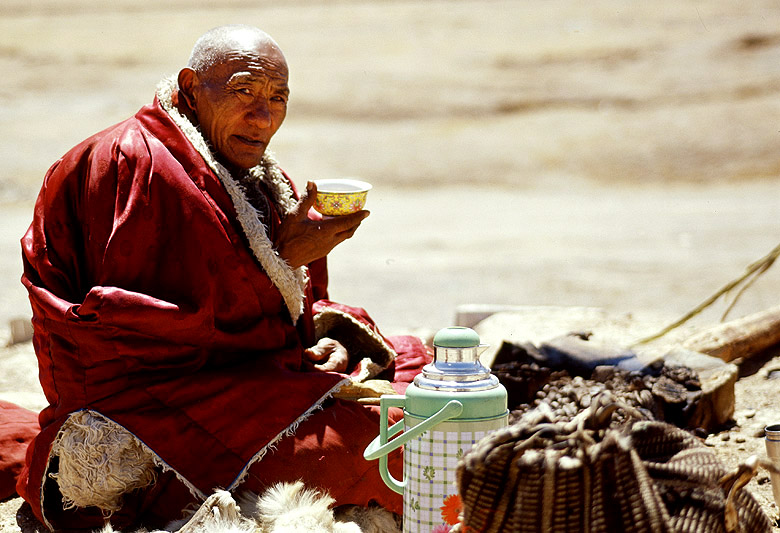
Chinese PinYin : Cang Zu
"Zang" is a Chinese appellation, calling itself "fan" (Tibetan pronunciation is "Boba"). Tibetan has different titles for people living in different regions: people living in Ali Region of Tibet call themselves "duiba", people in post Tibetan region call themselves "Tibetan BA", people in former Tibetan region call themselves "Weiba", people living in eastern Tibet, southwest Qinghai and Western Sichuan call themselves "Kangba", and people living in northern Tibet, Northwest Sichuan, Gannan and Qinghai call themselves "Kangba" "Andowa" means "human" in Tibetan.
There are also many Tibetan names: in the Tang and Song Dynasties, they were called "Tubo", in the Yuan Dynasty, "Tubo" and "Xifan", in the Ming and Qing Dynasties, "Xifan", "tubert", "tanggute", "Tibetan", "Tibetans", etc.
National origin
Tibetans originated from an agricultural tribe in the central part of the Yarlung Zangbo River Basin. According to archaeological discoveries, Tibetan ancestors lived and multiplied in the Yarlung Zangbo River Basin more than 4000 years ago. According to Chinese historical records, Tibetans belong to a branch of the Western Qiang people in the Han Dynasty. Like many ancestors who experienced the stone age, Tibetan ancestors gradually learned to raise and farm after living in groups, gathering and hunting. The Tibetan ancestors in Yalong area on the South Bank of the Yarlung Zangbo River were later divided into six tribes, namely six yak tribes. In the 6th century AD, the Yalong tribal leader became the leader of the tribal alliance and was called King (Tibetan pronunciation "Zanpu"). At this time, it has entered the slavery society.
According to Tibetan historical records, the ancestor of the Tubo royal family rose in the Yalong River Valley in Shannan region of Tibet. He was the leader of the "six yaks" department and had been handed down for more than 20 generations before Songzan Gambo. When entering the patriarchal clan society, we can also see the traces of going through the matriarchal clan stage from the mother and son names of the leaders of the first generations.
In the 6th century A.D., the leader of Shannan, known as "xibuye", formed an alliance with his neighbors and respected him as the leader of the alliance. At that time, there were more than 10 ethnic groups in Tibet, including "Yangtong", "Pengbo", "Supi" and "Gongbu", all of which had entered the slavery society. The Yalong tribal leader became the leader of the tribal alliance, known as "Zanpu" (King), and built a slavery Dynasty calling itself "Bo"
Tubo Period
At the beginning of the 7th century, Chinese history entered a new stage. The Tang Dynasty (618-907) established a strong unified political power, ending the chaotic and separatist situation in the Central Plains for more than 300 years. At the same time, the Tibetan national hero Songzan Ganbu merged more than 10 tribes and tribes, unified the Qinghai Tibet Plateau, and officially established the Tubo Dynasty, with the capital luosa (i.e. today's Lhasa). During his reign, Songzan Ganbu was determined to repair the Tang Court and absorb the advanced production technology and political and cultural achievements of the Tang Dynasty. In 641 ad, she married Princess Wencheng, the daughter of Emperor Taizong of the Tang Dynasty. Songzan Ganbu also introduced wine making, grinding, paper and ink production technologies from the Tang Dynasty, sent aristocratic children to Chang'an (now Xi'an) to study poetry and books, and hired Han literati to enter the Tibetan classics, maintaining friendly relations with the Tang Dynasty in politics, economy and culture. Emperor Gaozong of the Tang Dynasty granted song Zan Ganbu the titles of "fu MA Du Wei" and "Xihai Jun Wang", and later he was granted the title of "bin Wang" in the Jin Dynasty. Songzanganbu established the "nephew friendship" between Tubo and the Tang Dynasty for more than 200 years.
In 710 ad, Princess Jincheng of the Tang Dynasty brought tens of thousands of embroidered brocades, a variety of industrial and technical bookcases and a variety of utensils into Tibet and married chidezu Zan, king of Tubo. After entering Tibet, Princess Jincheng funded Buddhist monks in Yutian (now Xinjiang) and other places to build temples and translate scriptures in Tibet, and obtained classics such as Mao poetry, book of rites, Zuo Zhuan and Anthology from the Tang Dynasty. In 821 ad, the king of Tubo, chire Bajin, sent his staff to Chang'an three times to ask for an alliance. Tang muzong ordered officials of the Tibetan League and officials of the Tibetan League to hold a grand alliance ceremony in the western suburb of Chang'an. The following year, the Tang Dynasty sent Liu Yuanding and others to Tubo to find an alliance, and formed an alliance with Tubo monks such as Xiangbo zhanbu and Daxiang Shangqi xiner in the eastern suburb of Lhasa. The League was held in the first year (822) and the second year (823) of Changqing of Tang Dynasty, which is known as "Changqing League" in history. The two sides of the League reaffirmed the "nephew and uncle friendship" of "being one family" in history and discussed the "unity of the country" in the future. There are three stone inscriptions "Tang fan League stele" recording the contents of this league (also known as "Changqing League stele" and "nephew League stele", which are erected after the eighth League), one of which is in front of Jokhang Temple in Lhasa. In the following three or four hundred years, Tibetans had close ties with the Northern Song, Southern Song, Xixia, Liao and Jin Dynasties.
In 842 ad, the Tubo Dynasty was divided and disintegrated due to infighting among kings and scuffles between tribes and border generals, resulting in many local forces that did not belong to each other. They each occupied one side, fought against each other, and lasted for more than 400 years. At the same time, from the 10th century to the 12th century, Tibetan Buddhism was accepted by all levels in Tibetan areas and gradually penetrated into all fields of Tibetan society. Buddhist upper class figures often closely combined with local leaders and used each other, forming a feudal system of political and religious unity in Tibetan history.
Song and Yuan Dynasties
Since the end of the 9th century, the internal contradictions among Tibetans have gradually deepened, and the Tibetan areas have fallen into a long-term state of separatism and separatism, forming the "Ali king system", "Yaze" king system, (Shannan) "Yalong jue'a" king system and (former Tibet) "Lhasa king system". They run their own affairs and do not belong to each other. Sometimes they often invade and plunder each other for their own interests, and wars large and small are frequent.
During this period, Buddhism was accepted by all classes in Tibet and gradually penetrated into all fields of Tibetan society. The upper figures of Tibetan Buddhism often closely combined with local leaders and used each other, forming a feudal system of political and religious unity in Tibetan history. In the song and Jin Dynasties, Tibetan local governments strengthened their ties with the central government, and some local leaders were canonized by the central government. "Tea horse exchange" and other Tibetan and Han trade have developed greatly.
In the autumn of 1244, on behalf of the Mongolian Khan Ting, Wang Kuo Duan of the Mongolian sect successfully held a "Liangzhou alliance" with Sakya Banzhida, the living Buddha of the Tibetan saga sect. In 1271, Kublai Khan of Mongolia named the country yuan. Wusi Tibet (now central and Western Tibet and its Yixi region) and duogan became part of the unified multi-ethnic Dayuan empire. Since then, Tibet has been officially under the direct jurisdiction of the Chinese central government. At the beginning of the Yuan Dynasty, the general system Institute of central institutions (renamed xuanzheng Institute in 1288) was established for the first time to take charge of Buddhist affairs throughout the country and military and political affairs in Tibet and other places. The envoys (officials in charge) of the xuanzheng academy are usually the prime minister, and the Deputy envoys are monks recommended by the emperor.
In Tibet, people's households were checked, post stations were set up, taxes were collected, troops were stationed, officials were appointed, and the criminal law and calendar of the Yuan Dynasty were promulgated in Tibet. Tibetan monks and laymen were appointed as senior officials from the central to local levels. The establishment of administrative organs in wuszang, duogan and other places and the appointment, removal, promotion, reward and punishment of officials are subject to the orders of the central government.
Divide Tibet into local administrative regions. The Central Committee of the Yuan Dynasty set up three missionary and comfort envoys in Tibetan areas, all of which were directly under the management of the Propaganda Administration yuan. This is what Tibetan history books call "Three District khas". As far as the region of today's Tibet Autonomous Region is concerned, it was under the jurisdiction of two missionaries at that time - today's Lhasa, Shannan, Shigatse, Ali and other places were under the jurisdiction of the uszang missionaries; Today, the area around Changdu and the east of Naqu area are under the jurisdiction of duogan propaganda and comfort department. The Yuan Dynasty checked accounts in Wusi Tibet and other places, established errands, collected taxes, established post stations, stationed troops and guarded the frontier. The Wusi Tibetan propaganda and comfort department is located in Sakya (today's Sakya, Tibet), with 13 ten thousand households and several thousand households, and collects taxes. This division in the Yuan Dynasty became the basis for the evolution of Tibet's administrative divisions.
Ming and Qing Dynasties
In 1368, the Ming Dynasty replaced the Yuan Dynasty and made a peaceful transition in the form of confiscating the old imperial edicts and seals of the Yuan Dynasty and replacing the new imperial edicts and seals of the Ming Dynasty, inheriting the national sovereignty over Tibet.
The Ming Dynasty did not follow the official system of the Yuan Dynasty, but established a set of unique monk official conferment system. The Ming Dynasty granted different names to the representative political and religious leaders in various places, gave them seals and seals, and ordered them to manage their respective places. The succession of their positions must be approved by the emperor, and they can all pass through their names to the son of heaven.
In terms of administrative divisions and the establishment of military and political institutions, the Ming Dynasty basically inherited the division mode of the Yuan Dynasty in Tibet. In the Yuan Dynasty, in the hometown of Wusi Tibetan propaganda and comfort department and duogan propaganda and comfort department, the Ming Dynasty established Wusi Tibetan and duogan Wei command and envoys and the military and civilian Marshal's office of oresi. Later, the two Wei command envoys, wuszang and duogan, were upgraded to the command envoys of Xingdu, under which there were command envoys, propaganda and consolation departments, recruitment departments, wanhu government, Qianhu office and other institutions. Officials of military and political institutions at all levels were appointed local monks and secular leaders of the Commission. The appointment, removal and promotion of officials at all levels shall be directly decided by the Central Committee of the Ming Dynasty, and the seal letters shall be issued.
After the unification of China in the Qing Dynasty, the relationship between Tibetan areas and the central government was closer. The Qing government set up a vassal court in the central government to be responsible for local affairs in Tibet and Mongolia. The two living Buddhas of Gelug Sect of Tibetan Buddhism were officially granted Dalai Lama (1653) and Panchen Erdeni (1713). It has supported the Yellow cult forces represented by the Dalai Lama and strengthened the central government's direct management of Tibet. In 1725, the Qing Dynasty set up a minister for affairs in Xining and a minister for affairs in Tibet in Lhasa two years later. In 1751, the Qing Dynasty established the gasha government in Tibet, in which there were four galun, and officially authorized the Dalai Lama to manage local administrative affairs in Tibet. The system of the integration of politics and religion was officially established.
In 1792, the Qing Dynasty repulsed the Gurkha army invading Tibet. The following year, the Qing government promulgated the famous article 29 of the "articles of Association for dealing with the aftermath in Tibet" in Tibet, which made detailed and specific provisions on the official system, military system, border defense, finance, justice, household registration, military service and foreign-related matters in Tibet, and established the authority of the minister stationed in Tibet to supervise the handling of Tibetan government affairs. The Tibetan areas in the northwest and southwest have always been closely related to Tibet. All ethnic groups live together in these areas. The Qing government ordered the minister in charge of Xining and the governor of Sichuan to directly administer them. The management method still follows the chieftain system of the yuan and Ming Dynasties. Later, it implemented the land conversion in the Tibetan areas in the southwest.
Modern times
In 1368, the Ming Dynasty replaced the Yuan Dynasty and made a peaceful transition in the form of confiscating the old imperial edicts and seals of the Yuan Dynasty and replacing the new imperial edicts and seals of the Ming Dynasty, inheriting the national sovereignty over Tibet.
The Ming Dynasty did not follow the official system of the Yuan Dynasty, but established a set of unique monk official conferment system. The Ming Dynasty granted different names to the representative political and religious leaders in various places, gave them seals and seals, and ordered them to manage their respective places. The succession of their positions must be approved by the emperor, and they can all pass through their names to the son of heaven.
In terms of administrative divisions and the establishment of military and political institutions, the Ming Dynasty basically inherited the division mode of the Yuan Dynasty in Tibet. In the Yuan Dynasty, in the hometown of Wusi Tibetan propaganda and comfort department and duogan propaganda and comfort department, the Ming Dynasty established Wusi Tibetan and duogan Wei command and envoys and the military and civilian Marshal's office of oresi. Later, the two Wei command envoys, wuszang and duogan, were upgraded to the command envoys of Xingdu, under which there were command envoys, propaganda and consolation departments, recruitment departments, wanhu government, Qianhu office and other institutions. Officials of military and political institutions at all levels were appointed local monks and secular leaders of the Commission. The appointment, removal and promotion of officials at all levels shall be directly decided by the Central Committee of the Ming Dynasty, and the seal letters shall be issued.
After the unification of China in the Qing Dynasty, the relationship between Tibetan areas and the central government was closer. The Qing government set up a vassal court in the central government to be responsible for local affairs in Tibet and Mongolia. The two living Buddhas of Gelug Sect of Tibetan Buddhism were officially granted Dalai Lama (1653) and Panchen Erdeni (1713). It has supported the Yellow cult forces represented by the Dalai Lama and strengthened the central government's direct management of Tibet. In 1725, the Qing Dynasty set up a minister for affairs in Xining and a minister for affairs in Tibet in Lhasa two years later. In 1751, the Qing Dynasty established the gasha government in Tibet, in which there were four galun, and officially authorized the Dalai Lama to manage local administrative affairs in Tibet. The system of the integration of politics and religion was officially established.
In 1792, the Qing Dynasty repulsed the Gurkha army invading Tibet. The following year, the Qing government promulgated the famous article 29 of the "articles of Association for dealing with the aftermath in Tibet" in Tibet, which made detailed and specific provisions on the official system, military system, border defense, finance, justice, household registration, military service and foreign-related matters in Tibet, and established the authority of the minister stationed in Tibet to supervise the handling of Tibetan government affairs. The Tibetan areas in the northwest and southwest have always been closely related to Tibet. All ethnic groups live together in these areas. The Qing government ordered the minister in charge of Xining and the governor of Sichuan to directly administer them. The management method still follows the chieftain system of the yuan and Ming Dynasties. Later, it implemented the land conversion in the Tibetan areas in the southwest.
quantity
In the middle of the Tang Dynasty, Tubo occupied Helong and "millions of Chinese were captured". Under the rule of Tubo for more than 70 years, most of the Han people in Helong area have been "Tubo" because the Tubo rulers forcibly implemented the "Tubo" policy. Volume 320 of Changbian records more than 230 households among the four Tibetan Nationalities, and the number of households reaches "more than 2000", with an average of nearly 10 people per household; There is also a family of "15" living in Tubo nubu missang in the north of the Yellow River.
During the Northern Song Dynasty, the Tibetan population in andoh was about 2.1 million. Although there is no data on the total population of Tubo in the Jin Dynasty, the population of Tubo in the area south of the Yellow River under the jurisdiction of the Jin Dynasty is not far from that of the Northern Song Dynasty. If you add the population of other Tubo areas ruled by the Jin Dynasty and the Tubo areas ruled by the Western Xia and the Southern Song Dynasty, it is estimated that the population of Tubo under the three regimes of Jin, Xia and the Southern Song Dynasty may be less than that of the Northern Song Dynasty, because the population of song, Jin and The Jinxia war reduced the population of Anduo Tibetan area.
After the peaceful liberation of Tibet, the proportion of the Tibetan population increased slightly, and the size and proportion of the population in the Tibetan autonomous regions of Tibet, Sichuan and Qinghai greatly exceeded that of the Han nationality; The census since 1964 shows that the Tibetan population in all Tibetan autonomous regions in China, except Gannan Prefecture and Tianzhu County in Gansu Province, has greatly exceeded that of the Han nationality in all years, especially in the Tibet Autonomous Region. After 1982, the proportion of Tibetan population increased and the proportion of Han population decreased in these areas.
According to the 2010 national census, the total Tibetan population reached 6.282 million; Among them, the proportion of 0-14 years old is 25.6%, which exceeds the national average data. The fertility rate was 1.602, higher than the national average. The total population accounts for 0.4713% of the country, which is the eighth largest nation in China.
distribution
Tibetans mainly live in the Tibet Autonomous Region, Qinghai Haibei, Hainan, Huangnan, Golog, Yushu and other Tibetan autonomous prefectures, Haixi Mongolian Tibetan Autonomous Prefecture and Haidong region. Aba Tibetan and Qiang Autonomous Prefecture, Ganzi Tibetan Autonomous Prefecture and Muli Tibetan Autonomous County in Sichuan, Gannan Tibetan Autonomous Prefecture and Tianzhu Tibetan Autonomous County in Gansu, and Diqing Tibetan Autonomous Prefecture in Yunnan.
Before the founding of the people's Republic of China, under the rule of the feudal serfdom of political and religious unity, the productivity of Tibetan areas was very low. Agricultural production mainly planted highland barley, using iron or wooden tillers, plowing with two cattle lifting bars, sowing was generally sowing, extensive farming and low yield. The tools in pastoral areas are more primitive, and there are fewer iron tools. Cattle hair or cow leather are mostly used as ropes and pockets, wooden milk barrels and saddles are used, and leather kneading and wool picking are all done by hand. Generally rotate grazing with seasons. Handicrafts are mainly concentrated around big towns and big temples. Craftsmen engaged in textile, wood, iron, pottery, stone and other handicrafts use backward tools and operation technology. Tibetan family handicrafts play an important role. All building houses, wood making, spinning, weaving, salted leather, beating butter, etc. are completed by family members or neighbors. There are sidelines such as hunting and digging herbs. Commercial underdevelopment and small trade generally use silver dollars, mostly barter, while regional bulk local specialty trade is monopolized by a very few big Lords.
In particular, it is worth noting that plateau animal husbandry, which is the main Department of Tibetan traditional production, still accounts for a slightly larger proportion in production than agriculture. There are many kinds of animal husbandry production in the plateau. The pastoral areas are mainly semi settled nomadic types that transfer grazing in turn according to seasons, while the semi agricultural and semi pastoral areas and agricultural areas are settled nomadic and settled nomadic types. The types of livestock mainly include Tibetan sheep, Tibetan goats, yellow cattle, yaks, wild yaks, horses, mules, donkeys, etc. Domesticating yaks, cultivating yaks and planting highland barley are the special contributions of the Tibetan people in the history of human civilization.
After the founding of the people's Republic of China, Tibetan areas in all provinces were liberated one after another. After the liberation of Tibetan areas, the Communist Party of China and the people's government vigorously implemented national policies such as national equality, national unity, the united front and freedom of religious belief, led cadres and the people of the Tibetan and Han nationalities, United monks, laymen, patriots and Democrats, built grass-roots political power, stabilized social order, developed agricultural and animal husbandry production, carried out cultural, educational and health work, and promoted national trade, The construction of roads and bridges has laid a foundation for the smooth implementation of various principles and policies and the realization of regional national autonomy and social reform.
Before the democratic reform, in 1959, Tibet's GDP was only 174 million yuan, or 142 yuan per capita. The abolition of the feudal serfdom has greatly liberated and developed the productive forces. In 2007, the region's GDP reached 34.219 billion yuan, an increase of 59 times over 1959 at comparable prices, with an average annual growth of 8.9%.
Languages
language
Tibetans have their own language and characters. Tibetan belongs to the Tibetan branch of the Tibetan Burmese language family of the Sino Tibetan language family. It is divided into three dialects: Tibetan, Kang and Anduo, and has words. Jiarong Tibetan is rarely a dialect without words. The current Tibetan language is Pinyin written in the early 7th century based on ancient Sanskrit and western region characters. The use of Tibetan language has strengthened the economic ties between Tibetans and the Central Plains.
written words
The word "Tibetan" is written as "BOD YIG", which means "Tibetan characters". As a written communication tool of the Tibetan people, Tibetan has a long history, second only to Chinese in China. It is a kind of Pinyin character, which belongs to consonant character type. It is divided into three parts: consonant letters, vowel symbols and punctuation symbols. There are 30 consonants, 4 vowels, and 5 reverse letters (used to spell foreign words).
Consonants are grouped every four letters, a total of seven and a half groups. The actual pronunciation of each letter is different from ancient and modern times and dialects, but it is accompanied by a vowel a. Vowels, meaning "pleasant words", are relative to consonants. This name comes from the fact that the vowel sounds unobstructed and pleasant to the ear. Punctuation means "boundary line" or "boundary symbol". Tibetan punctuation marks are simple in form and few in type, and their use rules are different from those of other characters. There are six forms of punctuation in Tibetan, among which the sound insulation symbols between syllables are used most frequently. In addition, there are cloud head symbols, which are used for book titles or the beginning of articles; Serpentine vertical character, used at the beginning of an article; A single vertical sign, used at the end of a phrase or sentence; Double vertical character, used at the end of the chapter; Four vertical characters, used at the end of volume. With the development of society, in order to express semantics more accurately, punctuation marks of Western characters have been used for reference in Tibetan.
literature
Tibetan literature is rich and colorful, including writer literature and folk literature, ranking the forefront of Chinese ethnic minorities in quantity. The biography of King Gesar is a folk rap heroic epic, which is the longest rap epic in the world; The Tibetan literary classic cangyang Jiacuo love song has also enjoyed a good reputation all over the world.
Clothes & Accessories
Tibetan costumes, both men and women, remain intact. Different regions have different costumes. Men's wear is vigorous and bold; Women's clothes are elegant and natural, especially jewelry, gold and jade, forming a unique style of plateau women.
The basic characteristics of Tibetan clothing are long sleeves, wide waist, long skirts and boots. To a large extent, this depends on the ecological environment of the Tibetan people and the way of production and life formed on this basis. Wearing this kind of clothes with large structure and sleeping with clothes at night can be used as a quilt to resist the wind and cold; The robe sleeves are spacious, and the arms stretch freely. When the temperature rises during the day, one arm can be pulled out to facilitate heat dissipation and regulate body temperature. Therefore, the dress of taking off one sleeve has formed the unique style of Tibetan clothing.
Tibetan costumes are colorful, and their characteristics are also highlighted in the color matching and composition. During artistic performances and festival activities, all kinds of colorful Tibetan costumes will become the focus; The Tibetan people's daily clothes are mainly blue and white, with gorgeous belts or lace. In pastoral areas, blue, green, purple, green, yellow, rice and other color blocks are commonly used to form colorful ribbons. Women's leather robes often use cross pattern flower collar robes, which give people the association of "charity" and "caress". In addition, Tibetan costumes also boldly use strongly contrasting colors such as red and green, white and black, red and blue, yellow and purple, with bold and exquisite color matching.
Tibetan compatriots pay special attention to "hada" and regard it as the most precious gift. "Hada" is a snow-white fabric, which is generally about 20-30 cm wide and 1-2 meters long. It is woven with yarn or silk. Hada should be presented to show respect whenever there is a festive event, or a distant guest comes, or pays a visit to the elders, or goes on a long trip to see off.
Women wear long sleeved robes in winter and sleeveless robes in summer. They wear shirts of various colors and patterns, and an apron with colored patterns is tied at the waist.
There are many styles and different textures of Tibetan hats. There are ten or twenty kinds of Golden Flower Hat and hat. Tibetan boots are one of the important characteristics of Tibetan clothing. The common ones are "songbalamu" flower boots, and the soles are made of cotton and leather.
Tibetan men and women pay special attention to ornaments. The texture of ornaments includes silver, gold, pearl, agate, jade, emerald, coral, amber, etc. they are widely used in headwear, hair accessories, earrings, necklaces, waist ornaments and rings.
The waist coat is the most distinctive ornament. Most of the ornaments are related to the interest production in ancient times, and they are also decorated with gold and silver jewelry. The texture of headwear includes copper, silver and gold carving artifacts and treasures such as jade, coral and pearl. Beautiful appearance, mostly natural shape, can be said to be the finishing touch in Tibetan clothing.
full name
After the establishment of the Tubo Dynasty, Songzan Gambo granted meritorious officials territory and titles. People crowned the territory name before their own name to show that they are a prestigious family. Such as: Nie chisang Yangdun, Tonmi sambuza, etc. After the seventh century, Buddhism prevailed in Tibet, everything was stained with Buddhist color, and people's names like to invite Living Buddhas.
If a monk or living Buddha rises to the upper level, his name must be added with a monk or title. For example, Kanbu · Lun Zhu taokai. Kanbu is a monk, and his own name is "Lun Zhu taokai"; Another example: Panchen Erdeni Chuji jianzan, his name is "Chuji jianzan", and "Panchen Erdeni" is the title. The name of the living Buddha is usually preceded by the name of the temple or family temple, such as the living Buddha luosangchilie of Dongga temple, whose full name is "Dongga luosangchilie"; Another example is the living Buddha Doji Cairen of Rezhen temple, whose full name is "Rezhen Doji Cairen".
The names of ordinary civilians do not have surnames, but only first names, which are four characters, such as "duojizidan", "Shan Zeng quza", etc. For the convenience of addressing, people use only two words for short, such as "Duoji Zidan" for short "Duoji" and "Shan Zeng quza" for short "single". It is more common to use one or three words or the first two words or the last two words as the abbreviation, but it is not common to use two or four words as the abbreviation.
Civilian names have certain meanings to repose their thoughts, feelings and wishes. One is to use natural objects as their own names, such as Dava (Moon) and NIMA (sun); It also uses the date of the child's birth as the name.
Tibetan calendar
Tibetan calendar is a Tibetan calendar created by Tibetan ancestors. It is different from the Han calendar. It has a history of more than 1000 years. The Tibetan calendar has three major elements, including the phenological calendar inherent in Tibetan culture, the time wheel calendar introduced from India, and the time constitution calendar introduced by the Han people. It is the most valuable folk culture in Tibetan culture. The existing Tibetan almanacs with historical evidence first appeared in the 13th century (Yuan Dynasty). By the 19th century, the compilation of Tibetan almanacs had tended to be perfect.
The Tibetan calendar is a combination of yin and Yang, which divides a year into four seasons, in order of winter, spring, summer and autumn, with 354 days in the whole year. In the 12 months, the Yin month is the beginning of the year (the beginning of the year is the same as that in the current summer calendar), and the moon's circle and vacancy cycle is one month. Big and small months alternate, the 30th of the big month and the 29th of the small month. A leap month is used to adjust the relationship between the month and the season of the Manjusri Golden Wheel season. The leap time is different from the lunar calendar.
Due to the influence of the Han calendar, since the 9th century, the Tibetan calendar has also adopted the dating method of trunk and branch. The difference is that the five elements replace the ten trunk: A and B are wood, C and D are fire, Wuji is earth, Gengxin is gold, and nongui is water; Replace the twelve Branches with the twelve zodiac, that is, the son is a mouse, the ugly is a cow... And so on. For example, the year of Jiazi in the lunar calendar is called the year of Mutu in the Tibetan calendar. The Tibetan calendar is called "Rao Qiong", which is similar to the "sixty flower Jiazi" in the mainland, which reflects the original relationship between the Han and Tibetan calendars. In addition, the Tibetan calendar also sets 24 solar terms to make medium and long-term weather forecasts for Tibet, as well as forecasts of the movement of the five planets and solar and lunar eclipses.
Tibetan Medicine
Tibetan medicine is the abbreviation of Tibetan medicine. Tibetan medical science is quite developed. Tibetan medicine has a history of more than 2000 years and has formed a system as early as the Tubo Period. During the reign of Akamatsu Toku, Tibetan medicine has been hitherto unknown. The Tibetan medicine founder Utoy Radan, a famous Tibetan medicine, absorbed the essence of the four sides of the medicine on the basis of collecting ancient Tibetan medicine and compiled four medical records.
Tibetan medical diagnosis mainly includes inquiry, observation and palpation. Tibetan medicine generally divides diseases into cold and fever. The treatment methods include emesis, catharsis, diuresis, heat clearing, etc. in addition to oral medicine, there are acupuncture, cupping, bloodletting, enema, catheterization, cold and hot compress, drug butter scald, drug bath, etc. There are more than 1000 kinds of Tibetan medicines, including 400 commonly used, most of which are proprietary medicines.
Tibetan medicine has a specific and in-depth understanding of human body structure, which is unique in various traditional medical systems. According to Tibetan medicine, the human body has seven basic substances and three kinds of filth. These seven substances are food essence, blood, muscle, fat, bone, bone marrow and semen. These seven substances are tangible substances and constitute the main substances of the human body. The three kinds of filth refer to feces, urine and sweat.
Tibetan doctors believe that there are 360 bones in the whole body, including 28 vertebrae, 24 ribs and 32 teeth. There are 12 large joints and 210 small joints. There are 16 ligaments, 21000 hairs and 11 million sweat pores. Tibetan doctors believe that the human body has a series of pipeline systems. Among them, the white pulse is very important, which is described in the four medical classics, which says that "from the ocean of brain pulse, it extends downward like a tree root, and there are 19 water veins that manage the conduction." there are also veins that connect the viscera like silk thread, which is quite consistent with the concept of modern nerve; The black veins mentioned by Tibetan doctors think that they are like branches, some are connected with viscera, some are connected with skin and muscles, and their branches have large trunk veins, 700 small veins, and more subtle veins all over the body. The "black vein" here does not seem to refer only to blood vessels.
Tibetan drama
Tibetan Opera includes Tibetan Opera (agiram), Anduo Tibetan Opera (namut), dege Tibetan Opera and Changdu Tibetan opera. The singing, music, performance and clothing of each opera have different characteristics. Tibetan Opera in Tibet and Tibetan Opera in Anduo spread widely and had a great influence. Tibetan Opera in Tibet has a long history. Its origin can be traced back to the Chisong Dezan period in the 8th century. At the completion ceremony of Sang temple, artists combined Tibetan folk dance with Buddhist sutra stories into a mime God dance ceremony. In the past, when Tibetan opera was performed in the square, only drums and cymbals were used as accompaniment, and human voices were used as actors. Since the founding of the people's Republic of China, Tibetan opera has been put on the stage, and the singing and band have been reformed, which has enriched the expressiveness of Tibetan opera music.
Tang dongjiebu integrated the biography in Buddhist classics with folklore, fairy tales and other contents, and created a performance art with the combination of character, dance and singing, which gradually dramatized the single God dance in the past, strengthened the means of expression, and separated from religious rituals, forming the rudiment of Tibetan opera art. Therefore, the Tibetan people respect Tang dongjiebu as the originator of Tibetan opera.
In many Tibetan Opera venues, the audience must first present hada in front of the statue of Tang dongjiebu to show their gratitude. In Tang dongjiebu's hometown, it is even preserved that every time we watch Tibetan opera performances, we should bring some green oil and wool. These gifts are given to the troupe to wipe the green oil and wool on the iron cable, so as to preserve the (no longer existing) iron cable bridge built by Tang dongjiebu and make it rustless and immortal.
music
As early as around the 12th and 13th centuries, Monographs on Tibetan national music appeared, such as on Tibetan music by sagabandazhi gonggejianzan. The ancient Tibetan graphic music score - Yangyi music score - has been preserved and used in the temple. Tibetan traditional music has distinctive characteristics and various varieties, including folk music, religious music and court music. Folk music can be divided into five categories: folk songs, song and dance music, rap music, opera music and instrumental music. There are obvious differences in the style and types of folk music in the three dialect areas of Wei Zang, Kang and andoo. Religious music includes chanting music, religious ritual music and dance, Qiang Mu and temple instrumental music; The palace music and dance Gar is only spread in the Potala Palace in Lhasa and zhashlunbu temple in Shigatse. Folk music plays an important role in traditional music. Yangyi folk songs include folk songs (pastoral songs), labor songs, love songs, custom songs, ode to scriptures, etc.
song and dance
Tibetan folk songs and dances have various forms and distinctive characteristics. The lyrics of song and dance songs are extensive, such as praising the sun, moon, stars, mountains, rivers and earth, praising women's looks and clothes, missing relatives, blessing meeting, blessing good luck and religious beliefs. Since the 1950s, the masses have compiled and sung many lyrics reflecting the new life.
Guohe: an ancient form of song and dance, which means circle song and dance. It is widely spread. Sakya area is called "Suo", Gongbu area is called "Bo" or "Boqiang", and Northern Tibetan pastoral area, Kang area and Anduo area are called "Zhuo" or "Guozhuo" (commonly known as Guozhuang).
Heap harmonic: it is a song and dance in Western Tibet. Dui means highland, which refers to the whole area of the Yarlung Zangbo River Basin from west of Shigatse to Ali. Heap harmonic is very popular in Lhasa.
Xianzi: in Tibetan, it is called "page", "Yi" or "Kang harmonic", which is popular in Kang, Wei and Tibet areas. When singing and dancing, men use ox horn Hu or erhu to lead the dance accompaniment in front of the team, so it is called Xianzi. Xianzi originated in Batang, Sichuan. Batang Xianzi is famous for its beautiful tunes, rich repertoire and stretching dance.
Boma: it is mainly popular in Lhasa. Boma's music basically consists of three parts: medium speed introduction, Adagio songs and Allegro dances. The music of the song is elegant and beautiful, accompanied by simple dance movements; The dance music is warm and lively, the dance is light and relaxed, and the performer only dances without singing. The tune of the introduction is basically fixed; In the dance part, most of the songs are in commercial mode, and some of them end in Yu and Gong mode; The tunes of the songs are different, and there is a close relationship transfer in some songs; The accompaniment form is the same as heap harmonic.
Xieqin: an ancient ritual song and dance form spread in Lhasa, Shannan, Shigatse, Ali and other areas of Tibet. It is mostly sung during grand festivals or ceremonies. Harmonic Qin is generally composed of many songs and dances with titles. The beginning and end music are called "harmonic fruit" (Introduction) and "Tashi" (auspicious). Each song and dance music is composed of Adagio and Allegro, or adagio, middle board and allegro. The music is simple and enthusiastic. The lyrics include human origin, historical legends, praise and blessings, etc.
Reba harmonic: a song and dance performed by wandering artists popular in Kangba area. Including drum and Bell Dance, juggling, song and dance drama, stick dance, deer dance, knife dance, Reba string and other performance forms. Reba string music is the same as the popular folk strings. Drum and bell dance music includes the male lead singer of Sanban and adagio. The music is warm, beautiful and charming. In addition, there are Zhuo harmonic (drum dance) popular in Tibet, xiongchong and Zhuo Jian popular in Zhongdian, Yunnan, and duodi dance and GABA dance popular in Gannan.
instrumental music
There are many kinds of Tibetan musical instruments. Plucked instruments include zamnier and Yangqin; Bowstring instruments include ox horn Hu, tie Qin, GENKA, Hu Qin, rema Qin, etc; Wind instruments include clarinet, bone flute, tuba, horn, suona, copper flute, conch, mouthstring, bamboo flute, mud flute, etc; Percussion instruments include big drum, Reba drum, Dama drum, balang drum, Gong, cymbal, string bell, etc. Among them, zhamunie, niujiaohu, tuba and clarinet are the most distinctive. It is said that zamnier, a six string piano, has a history of 600 ~ 700 years. It is the main accompaniment instrument for folk songs and dances, Duihe, boma and zamnier. Ox horn Hu, called "biwang" or "Biyong" in Tibetan, is similar to the shape of erhu, but the barrel is made of ox horn and is mainly accompanied by strings and zhega. Due to the short bow, when playing, all the long notes in the melody are played into the homophonic repetition of eighth notes, and the large second or small third leaning or complex leaning is added to the weak beat to form the main characteristics of string music. Clarinet and bone flute are popular in pastoral areas. The clarinet is made of wood, and the bone flute is made of Eagle leg bone or sheep leg bone. It has high sound range, low volume and sharp sound. It is often used to play pastoral tunes. Tuba, called "Tongqin" in Tibetan, is made of copper. The tube body has no hole, about 3 meters long, and there is a big trumpet at the lower end. It can blow out pitch and fifth overtone. It has a large volume. It is mostly used in Temple ritual activities and Tibetan opera music.
Since the founding of the people's Republic of China, especially after the democratic reform in Tibet in 1959, Tibetan music culture has developed greatly. Mass art galleries and professional artistic performance units have been established in various regions, such as the song and dance troupe of the Tibet Autonomous Region, the Tibetan Opera Troupe, the Qinghai ethnic song and dance troupe, and the cultural troupes and teams at the state (special region) and county levels of each province (region) A lot of work has been done in performing, collecting and sorting out ethnic and folk music. Famous Tibetan opera artists include ZhaxiDunzhu, amaciren, etc; The rappers in the biography of King Gesar include Zhongke Zaba Yumei and so on; Folk singers include Amira (late), poor Buzhen (late), Annie, etc. The singer Caidan Zhuoma, the composers Baideng Langji and gesandaji, and the conductor ozudoji are professional musicians trained after the founding of the people's Republic of China. Luo nianyi, a Han composer, has long been rooted in the plateau and made valuable contributions to the development of national music.
Architecture
Among the ancient architectural arts in Tibet, the architectural art of Tibetan Buddhist monasteries is the most characteristic of the nation and the times. They are mostly built near the mountains, large-scale, vigorous, exquisite, resplendent and spectacular. From the beginning of the formation of Buddhist temples to the formation of the main style of architectural art of Tibetan Buddhist temples, it has generally experienced three development stages of the integration of temples, temples, palaces and temple buildings.
The most representative folk house of Tibetan is the blockhouse. Most of the blockhouses are stone and wood structures, with thick exterior walls and simple and rough style; If the outer wall shrinks upward and is built close to the mountain, the inner slope is still vertical. The blockhouse is generally divided into two floors, and the number of rooms is calculated by columns. The bottom layer is stockyard and storage room, and the floor height is low; The second floor is the living floor, and the large room is the lobby, bedroom, kitchen, and the small room is the storage room or staircase. If there is a third floor, it is mostly used as a scripture hall and sun terrace. Because it looks like a blockhouse, it is called a blockhouse.
ceremony
Tibetans pay great attention to etiquette. When they see the elders and peers in their daily life, they have different ways to bow and salute. When you see the elderly or respected people, take off your hat, bend down 45 degrees, hold your hat in your hand and close to the ground. When you see your peers, you can lower your head a little and hold your hat on your chest. At this time, bowing is only a courtesy. In some areas, palms are used together with bows. Close your palms too much to show respect. This kind of ceremony is mostly used to meet the elderly or respected people.
Xianhada is the highest etiquette of Tibetan hospitality, expressing warm welcome and sincere respect to guests. Hada is Tibetan, that is, gauze or silk scarf. Mainly white, also light blue or light yellow, generally about 1.5m to 2m long and about 20cm wide. The best is blue, yellow, white, green and red colorful hada. Colorful hADAS are used for the highest and most solemn ceremonies, such as Buddhist affairs.
Tibetans kowtow when they make pilgrimages to Buddha statues, pagodas, living Buddhas and pay homage to the elders. Kowtow is usually carried out in temples with religious activities. Put your hands together, hold your head high, bow three times from the top, from your forehead to your chest, and then lie on your knees, straighten your hands and draw the ground as a sign, so do it repeatedly. Kowtow is also carried out in temples. Close your palms and arch three times, then arch your waist to the foot of the Buddha statue and gently push it with your head to express sincere repentance. When paying homage to the elders, we should kowtow our heads to show respect and blessing.
In Tibetan, "side" means "dirty", while "color" means "clearing", and side color refers to an activity of clearing bad luck. On the third or fourth day of the child's birth, relatives and friends will bring highland barley wine, butter tea, clothes and hats for the child and come to the door to congratulate him. As soon as the guests arrive, they first offer hada to the mother and the baby, then toast and pour tea to the mother, finally look at the baby, praise the child's good luck and facial features, then pinch a Zan rake with their thumb and index finger and put it on the baby's forehead to bless the child's good luck.
marriage custom
The marriage customs of Tibetans are different, but the basic steps are roughly the same. For example, after a young man and a young woman are interested in each other, they have to ask the Lama living Buddha to see whether their future marriage is auspicious and whether their family is happy. If it is "Ji", the man or woman will invite his relatives or matchmaker to propose to the other party's house with hada and gifts. If the other party agrees to the marriage, he will accept hada and gifts, and immediately present a hada gift to the person and return it as a gift. Subsequently, the two sides negotiated the date of the engagement ceremony. At the engagement ceremony, the man or woman presented gifts and money to each other's house, made an engagement, held a banquet to celebrate, and finally asked the living Buddha to make divination and sign to select the auspicious wedding day. On the day of marriage, either the bride is married to the man's house, or the groom is redundant to the woman's house. Relatives lead horses to each other's house to pick up the new couple, and the greeted party takes his dowry with him to the other party's house to get married. After welcoming the newcomers, they were arranged to sit on a special cushion and began to offer hada and wine to them. In the evening, the couple entered the bridal chamber. At this time, the relatives toasted them again and sang blessing songs. May they grow old together and have good luck. Within six months after marriage, the husband and wife should return to the other party's house for a few days. So far, the whole wedding is over.
diet
Tibetans have their own unique food structure and eating habits. Butter, tea, Zanba and beef and mutton are known as the "four treasures" of Tibetan diet. In addition, there are highland barley wine and all kinds of dairy products.
Tibetan food
Tibetan food is one of the genres in Chinese catering series, with a long history and rich varieties. Tibetan food is divided into staple food, dishes and soup. The taste of Tibetan food is light and peaceful. Many dishes generally don't put spicy seasonings except salt, scallion and garlic.
Zanba is an important Tibetan food. Its production is very simple. After frying highland barley and grinding it into flour, it becomes Zanba. There are various ways to eat. The most common way is to mix tea juice, butter, Zanba and milk residue in a small bowl by hand and knead them into small balls.
Air dried meat is a very special food in Tibet. In early winter, beef and mutton are cut into small strips, hung in a cool and ventilated place, frozen and gradually dried naturally. When eaten in February and March of the coming year, the meat is not only crisp, but also unique in taste.
There are many ways to cook and place food at Tibetan banquets. The oldest method is to determine the form of meal according to the social status of guests, as well as vegetarian feast and meat feast.
In terms of meat eating, Tibetans have more taboos. Generally only eat beef and mutton, not horses, donkeys and mules, especially dog meat. Except for some urban residents, people in agricultural and pastoral areas are generally not used to eating aquatic and seafood foods such as fish, shrimp, snake and eel.
With the improvement of social, economic and cultural life, Tibetan food is constantly improved and enriched in cooking technology and eating forms.
Wine culture
Highland barley wine in Tibet is directly brewed from highland barley. The degree is low. Tibetan people, men, women, young and old, like to drink it. It is necessary for celebrating the festival.
Tibetans have very rich drinking etiquette and customs. Every time they brew new wine, they must first worship God with "new wine", and then follow the ancient motto of "order of elders and children". First, they toast their elders at home, and then their families can drink freely. In festivals, weddings or many people's gatherings, drinking is generally presented to the respected elderly first, and then toast clockwise. The toaster should hold the glass above his head with both hands and offer it to the recipient, especially for the elderly. The drinker first takes the glass with both hands, then holds it with his left hand, and then gently dips the wine in the glass with the ring finger of his right hand, and bounces it into the air. This is repeated three times to show his respect for heaven, earth and God and his prayers for the three treasures of Buddhism, Dharma and monk. Sometimes he has to whisper auspicious wishes in his mouth, and then drink.
When drinking at a party, songs are essential. Tibetan wine songs are melodious and beautiful, and most of the contents are words of blessing and praise. At the general banquet, the host and hostess will sing wine songs and toast. At the grand banquet, there are special toast girls who wear gorgeous clothes and sing charming wine songs, and take turns to persuade the guests to drink until the guests get drunk.
tea culture
Butter tea is an indispensable drink for Tibetans in Tibet. Making butter tea is inseparable from butter, salt and tea. Butter is the cream extracted from cow and sheep milk. The golden butter extracted from yak milk in summer is the best, and the pure white is extracted from sheep milk. When drinking tea, the Tibetan people pay attention to the order of elders and children, subject and object. Guests can't drink tea too quickly. Generally, three bowls are the most auspicious.
funeral
There are six burial methods for Tibetans after their death. The most solemn one is tower burial. Only after the death of the Dalai Lama or Panchen Lama, his body is repaired and placed in a tower in the Potala Palace to decorate the tower. The Tibetan area still retains the custom of tree burial, wrapping the dead relatives into the form of a fetus in the mother body and hanging on the trunk.
Beautiful Tibet is the main settlement of Tibetans. Tibetan funerals still follow traditional customs. Outsiders don't know what the "celestial burial" is, and they think it's very mysterious. In fact, each nation has its own specific customs. Marriage and funeral have their own unique characteristics. In fact, this is a clumsy attempt to use administrative means to interfere with national customs, which will inevitably end in failure. The reason is that people's psychology plays a great role. The formed concept can not be changed with a document, not to mention the spiritual sustenance of the local people. Especially religious people believe that celestial burial places a desire for the soul to ascend to "heaven".
taboo
When addressing each other, avoid calling them by their first names, and add honorific titles to show respect and kindness. For example, in Lhasa, the word "La" should be added after the name; In Shigatse, the male name is preceded by "Aji" or "ajue".
When visiting a Tibetan family, the host must first respect the guest's highland barley wine. The guest should first dip a little wine into his ring finger and pop it into the sky for three consecutive times to show sacrifice to heaven, earth and ancestors, and then take a sip. The host will fill it up in time, drink it three times, and drink a cup when it is filled up for the fourth time. Otherwise, the host will be unhappy and think that the guest is impolite or despises him. When the guest enters the house and sits down, the host will pour butter tea to honor the guest. The guest can only drink it when the host holds it in front of him with both hands. Don't drink it by yourself. Sit cross legged when seated; Accept gifts with both hands; When giving gifts, bow down and raise your hands above your head; Serve tea and wine with both hands, and don't put your fingers into the mouth of the bowl.
When drinking tea, the guest must wait for the host to hold the tea in front of him before reaching for it, otherwise it will be considered impolite. When eating, pay attention to not eating enough, chewing soundlessly, drinking soundlessly, and picking food without crossing the plate. Treat guests with mutton. A piece of meat with a tail at the lower part of the sheep's spine is expensive. It should be respected to the most respected guests.
Tibetans are forbidden to eat donkey, horse and dog meat. In some places, they are also forbidden to eat meat of five claws and birds. Out of religious belief, we generally oppose the killing of wild animals. When you encounter religious facilities such as temples, manidui and pagodas, you must detour from left to right; Do not cross over magic tools and braziers; The warp cylinder and warp wheel shall not be reversed. It is forbidden for others to touch their head with their hands.
festival
There are many Tibetan festivals. Basically, there are festivals every month. The first month of the Tibetan calendar is the most festive and solemn month. In this month, festivals are celebrated almost every day. Tibetan festivals are the main manifestation of Tibetan culture. Tibetan Buddhism has a history of more than 1300 years in Tibet, China, and has become a part of the life of the Tibetan people. Due to its profound influence, Tibetan festivals have a strong religious color, and some have evolved into pure religious festivals.
Xuedun Festival is one of the important festivals of the Tibetan people in Tibet. It is held on July 1 every year for four or five days. Xuedun is a Tibetan translator, which means "yogurt feast", so Xuedun Festival is interpreted as a festival of drinking yogurt. According to the regulations of Gelug Sect (yellow sect) of Tibetan Buddhism, the Tibetan calendar is closed from June 15 to July 30 every year. Lamas of large and small temples are not allowed to go out to avoid stepping on insects. They can go down the mountain only after the ban is lifted on July 30. When the Lama went down the mountain, farmers and herdsmen took out yogurt and offered it to form the Xuedun Festival.
The Great Buddha Festival is held in tashilhunpo temple in May of the Tibetan calendar every year. Zhashlunbu (Tibetan transliteration "Jixiang Sumi mountain") temple is the fourth largest temple of Gelu sect (yellow Religion) of Tibetan Buddhism. At the foot of niseri mountain in Xigaze, Tibet, it is the residence of Panchen lamas for all ages.
Prayer Festival is the most grand festival in Tibetan areas. It is not only a large-scale religious activity, but also a folk festival activity. It is called "morangchebo" in Tibetan. In the Tibetan areas of the prefecture, there are two kinds of such grand gatherings. One is the Gelug Prayer Festival; First, the original Tibetan religion, the Prayer Festival of Benbo religion, is the same. The two prayer festivals are held twice a year, one on the 15th of June of the lunar calendar and one from the first to the third day of the first month of the lunar calendar. The Prayer Festival in the first month is more grand than that in summer. There are also temples and believers of Benbo religion in the state, who still retain strong primitive religious customs. People who come to the event will go to Xiaoxitian, the holy mountain behind Gami temple, on the 13th or 14th of the first month. On the morning of the 15th day of the first month, the monks and lamas in the temple put on their new cassocks and sounded the big and small bronze trumpets by the band in the temple. Then the monks of the whole temple gathered in the Sutra hall to chant scriptures, and the living Buddha arranged everyone's responsibilities on this day. At nearly 12:00, monks performed "God dance" (also known as visiting immortal dance) to pilgrims and audiences from all over the world. The content of God dance includes both stories praising the unity of Tibetan and Han in history and dances compiled according to the classic stories of Benbo religion.
Alan Dawa Zhuoma: female singer, one of the nine singers of AI Hui, the "beautiful singer".
Zaxidunzhu: a new generation of Chinese film, television and song Sanqi star, "member of the all China Youth Federation", "member of the Chinese Musicians Association", "tourism image ambassador of Shangri La". It was rated as "glorious bloom - China's top ten minority youth singers" by CCTV.
Rong zhongerjia: male singer. In 2011, he released the music album "Tibetan mystery · shepherd's song", which lasted eight years and was based on the Tibetan heroic epic King Gesar. In 2012, he released the single "leading for the dream".
Pu Bajia: an actor who made his debut by winning the championship in "come on, good man" on Oriental satellite TV. Won the "Best Actor Award" at the Monaco Film Festival on May 18, 2008.
Han Hong: female singer, creative singer. Member of the CPPCC National Committee, member of the Standing Committee of the all China Youth Federation and director of the China Overseas Friendship Association.
Qu niziren: actress, on October 23, 2009, won the national championship of "come on! Oriental angel" of Oriental satellite TV and the best performance award.
Nimazeren Yadong: male singer, the first person of Tibetan popular songs, became popular all over the country with CCTV music and television program yearning for the divine eagle. Together with Tengger and Rong zhongerjia, he is called "three stars on the plateau".
Lausanima: the late crosstalk actor, the well-known disciple of crosstalk actor Bolin, and his masterpiece Lausanne learning.
Bian Badji: female singer, Bian Badji's Tibetan version "like you" stunned the students who were eating at the scene. The flash video has been clicked more than ten million times in just a few days after it is uploaded to the network. It has been popular in the streets of Lhasa and has been highly praised by people in Beijing, Shanghai, Chengdu, Taipei and many other cities.
Wuze baimazasi: born in Jiuzhaigou County, Aba Tibetan and Qiang Autonomous Prefecture, Sichuan Province in 1992, graduated from Sichuan Normal University, young actor, singer, Prince of Chinese musical, well-known model in the mainland. He officially embarked on the performance road in 2014 and has played the leading role in many TV films, musicals, dramas and TV dramas since his debut, Established the inspirational idol line in the entertainment industry.
Wan Ma Caidan: Director and screenwriter in mainland China. Born in guide County, Hainan Tibetan Autonomous Prefecture, Qinghai Province in December 1969, he graduated from Northwest University for Nationalities and Beijing Film Academy successively. He is a director, screenwriter and producer in mainland China, a member of China Directors Association, a member of China filmmakers Association and a member of China Film Literature Society.
Jiangyang Zhuoma: Jiangyang Zhuoma, with her exotic background, warm and generous singing, dignified and calm typhoon, and the magnanimity of ruling the world, is destined to be a superstar in the music world in the 21st century. " The beautiful song of Jiangyang Zhuoma has stepped out of the Qinghai Tibet Plateau and onto the international stage, bringing happiness and auspiciousness to mankind.
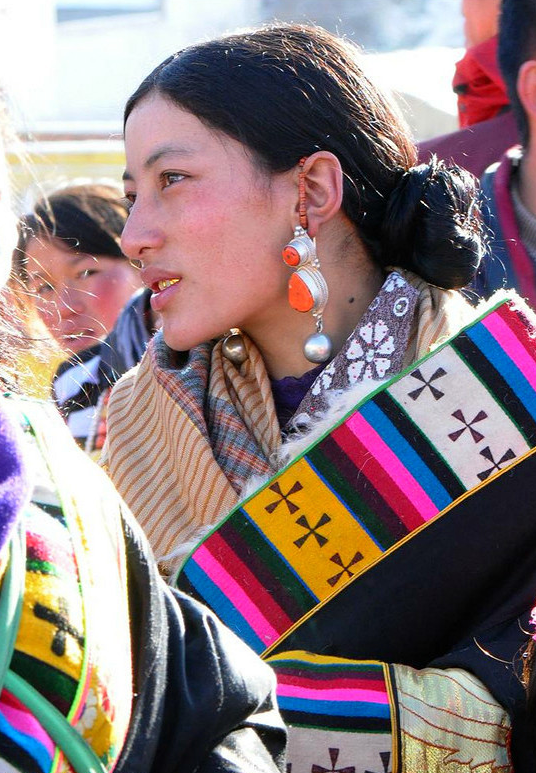
Tibet Nationality
-
Manchu Nationality
The Manchu population is distributed all over the country, mainly in Liaoning, Hebei, Heilongjiang, Jilin, Inner Mongolia Autonomous Region, Beijing and other provinces, autonomous regions and municipalities directly under the central government, while ot. Man Zu
Views: 21 Time 2021-03-07 -
Yi Nationality
Yi is the sixth largest ethnic minority in China. Its national language is Yi. It belongs to the Yi branch of the Tibetan Burmese language family of the Sino Tibetan language family. There are 6 dialects in the north, East, South, Southeast, West and cent. Yi Zu
Views: 23 Time 2021-03-07 -
Buyi Nationality
Buyi Nationality, a relatively large minority in Southwest China, has the Buyi language as its national language. It belongs to the Zhuang Dai branch of the Zhuang Dong language family of the Sino Tibetan language family. It is closely related to the Zhua. Bu Yi Zu
Views: 20 Time 2021-03-07 -
She Nationality
She nationality is one of the ethnic minorities with a small population in China, with a total population of 708651 (2010). It is distributed in some mountainous areas in more than 80 counties (cities) in Fujian, Zhejiang, Jiangxi, Guangdong, Guizhou, Anh. She Zu
Views: 19 Time 2021-03-07 -
Lahu Nationality
The Lahu nationality is one of the oldest nationalities in China. Its national language is Lahu. It belongs to the Yi branch of the Tibetan Burmese language family of the Sino Tibetan language family. It worships many gods and worships "Esha".. La Hu Zu
Views: 30 Time 2021-03-07 -
Jingpo Nationality
Jingpo, one of China's ethnic minorities, has its own language and characters. The language belongs to the Tibetan Burmese language family of the Sino Tibetan language family. The five branches belong to the Jingpo language branch and the Burmese Language. Jing Po Zu
Views: 23 Time 2021-03-07 -
Gelao Nationality
Gelao nationality, ethnic origin and ancient Liao (L ǎ o) It is related to people. The national language is Gelao language, belonging to the Sino Tibetan language family. There is no national language, and Chinese is commonly used. Gelao people worship th. Yi Lao Zu
Views: 35 Time 2021-03-07 -
De'ang Nationality
The De'ang Nationality, also known as "Bulong nationality", is a mountain minority in the border area between China and Myanmar. Its national language belongs to the wa De'ang language branch of the mon Khmer language family of the South Asian l. De Ang Zu
Views: 25 Time 2021-03-07 -
Oroqen Nationality
Oroqen nationality is one of the nationalities with the least population in Northeast China. According to the fifth national census in 2000, the population of Oroqen nationality is 8196. Oroqen language belongs to the Tungusic branch of man Tungusic langu. E Lun Chun Zu
Views: 83 Time 2021-03-07 -
Hezhe Nationality
Hezhe nationality is a minority nationality with a long history in Northeast China. Its national language is Hezhe language, which belongs to the Manchu branch of the Manchu Tungusic language family of Altai language family (there is also a view that it s. He Zhe Zu
Views: 77 Time 2021-03-07 -
Luoba Nationality
Luoba nationality is a minority in China, with a total population of about 600000. Among them, there are more than 2300 people in China controlled areas.. Luo Ba Zu
Views: 70 Time 2021-03-07 -
Jinuo Nationality
Jino nationality is one of the seven unique nationalities with a small population in Yunnan Province. The national language is Jino language. It belongs to the Yi language branch of the Tibetan Burmese language family of the Sino Tibetan language family. . Ji Nuo Zu
Views: 103 Time 2021-03-07
